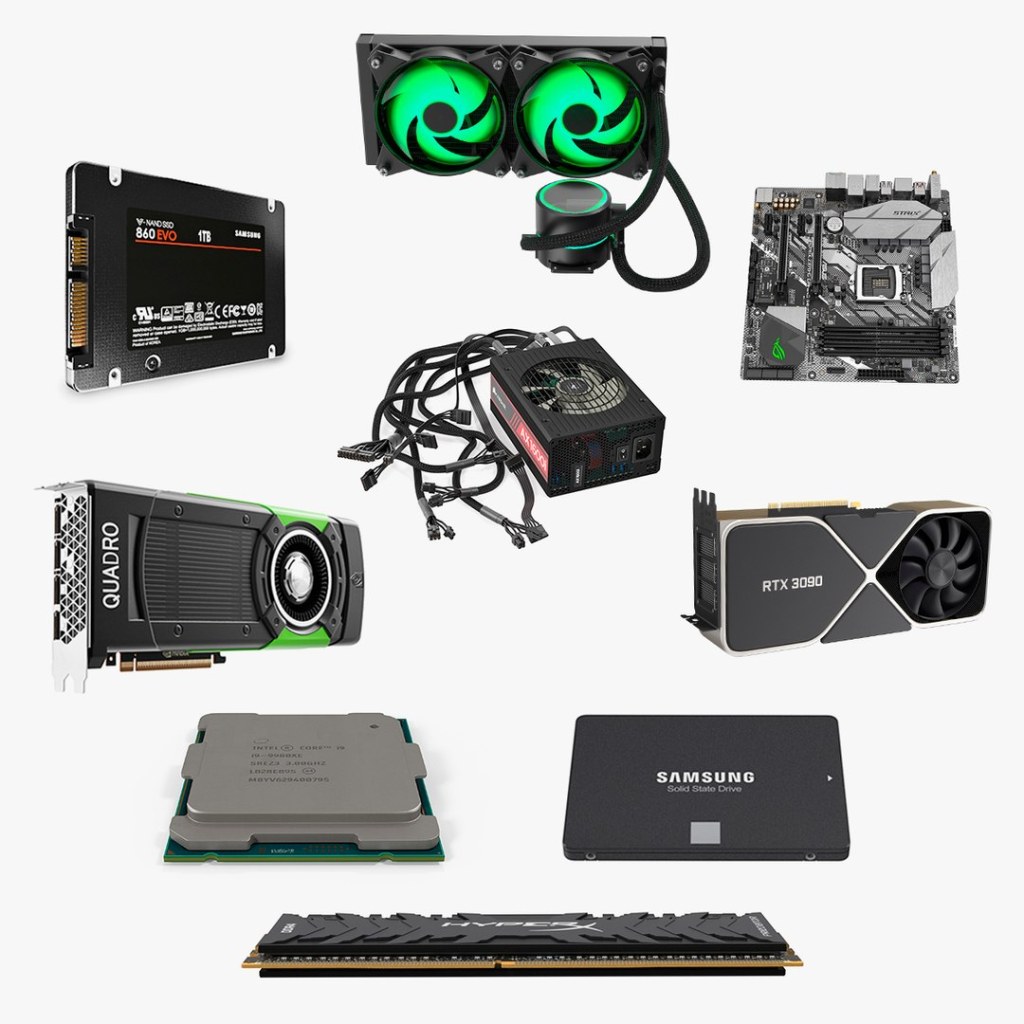Unleash The Power Of Computer Hardware 3D Model: Get Yours Now!
Computer Hardware 3D Model
Introduction
Hello, Readers! Today, we will dive into the fascinating world of computer hardware 3D models. In this article, we will explore what computer hardware 3D models are, who uses them, when they are used, where they are utilized, why they are important, and how they are created. So, grab a cup of coffee and get ready to explore the intricate world of computer hardware 3D models.
2 Picture Gallery: Unleash The Power Of Computer Hardware 3D Model: Get Yours Now!


What is a Computer Hardware 3D Model?
A computer hardware 3D model refers to a digital representation of a physical computer component or device. It allows users to visualize and interact with various hardware components in a virtual environment. These models can range from simple representations of individual parts to complex assemblies and systems.
Who Uses Computer Hardware 3D Models?

Image Source: turbosquid.com
Computer hardware 3D models are utilized by a diverse range of individuals and industries. Hardware manufacturers use these models to showcase their products, allowing potential customers to explore the design and functionality before making a purchase. Engineers and designers leverage them for product development and prototyping. Additionally, educational institutions and students utilize these models for learning purposes, enabling a more interactive and engaging experience.
When are Computer Hardware 3D Models Used?
Computer hardware 3D models are used throughout various stages of the product lifecycle. They are employed during the design and development phase, helping engineers and designers visualize and test different configurations. These models are also utilized for marketing and sales purposes, providing potential buyers with a realistic representation of the product. Furthermore, computer hardware 3D models are crucial in the training of technicians and assembly line workers, ensuring efficient and accurate assembly processes.
Where are Computer Hardware 3D Models Utilized?
Computer hardware 3D models find applications in various industries and settings. They are extensively used in the automotive industry to simulate the assembly of complex electronic systems. In the aerospace industry, these models aid in the design and analysis of aircraft components. Additionally, computer hardware 3D models are utilized in the gaming industry to create realistic virtual environments and characters.
Why are Computer Hardware 3D Models Important?

Image Source: turbosquid.com
Computer hardware 3D models play a vital role in enhancing productivity, reducing costs, and improving efficiency. By allowing engineers and designers to visualize and analyze hardware components before physical production, potential design flaws can be identified and rectified early in the process. This leads to reduced prototyping costs and faster time-to-market. Furthermore, computer hardware 3D models enable effective communication among stakeholders, facilitating better collaboration and decision-making.
How are Computer Hardware 3D Models Created?
Computer hardware 3D models are created using specialized computer-aided design (CAD) software. These software tools allow designers and engineers to create precise and detailed representations of hardware components. Various modeling techniques such as parametric modeling, surface modeling, and solid modeling are employed to accurately depict the physical characteristics of the components. Once the 3D model is created, it can be further enhanced with textures, materials, and animations to provide a realistic representation.
Advantages and Disadvantages of Computer Hardware 3D Models
Advantages:
1. Enhanced visualization and understanding of hardware components.
2. Improved design accuracy and reduced prototyping costs.
3. Efficient collaboration among stakeholders.
4. Accelerated product development and time-to-market.
5. Realistic representation for marketing and sales.
Disadvantages:
1. High initial learning curve for CAD software.
2. Hardware limitations and system requirements for complex models.
3. Potential inaccuracies due to limited data or assumptions in the model.
4. Dependence on software compatibility and updates.
5. Costly investment in hardware and software infrastructure.
Frequently Asked Questions (FAQ)
Q: Are computer hardware 3D models compatible with all CAD software?
A: Computer hardware 3D models can generally be exported to common file formats that are compatible with most CAD software. However, compatibility may vary depending on the specific software and file version.
Q: Can computer hardware 3D models be used for 3D printing?
A: Yes, computer hardware 3D models can be used for 3D printing. The models can be exported to formats suitable for 3D printers, allowing physical prototypes to be created.
Q: Are computer hardware 3D models accurate representations of the actual components?
A: Computer hardware 3D models strive to be as accurate as possible. However, there may be limitations and small deviations due to factors such as manufacturing tolerances and material properties.
Q: Can computer hardware 3D models be animated?
A: Yes, computer hardware 3D models can be animated. Animations can be applied to demonstrate the functionality and movement of various components.
Q: Are computer hardware 3D models only used for visual representation?
A: No, computer hardware 3D models are not limited to visual representation. They can also be utilized for simulations, virtual testing, and analysis of the components.
Conclusion
In conclusion, computer hardware 3D models have revolutionized the way we design, develop, and interact with hardware components. With their ability to enhance visualization, improve collaboration, and reduce costs, these models have become indispensable in various industries. Whether it’s for product development, marketing, or education, computer hardware 3D models offer a powerful tool to bring ideas to life. So, embrace the world of computer hardware 3D models and unlock endless possibilities in the realm of hardware innovation.
Final Remarks
It is important to note that computer hardware 3D models are representations and simulations, and they may not always capture every aspect of the physical component accurately. It is advisable to consult technical specifications and experts for precise information before making critical decisions based on the 3D models. Additionally, constantly evolving technology and software updates may impact the compatibility and functionality of these models. Stay updated with the latest advancements and ensure your hardware and software infrastructure meets the requirements for optimal utilization of computer hardware 3D models.
This post topic: Computer Hardware

